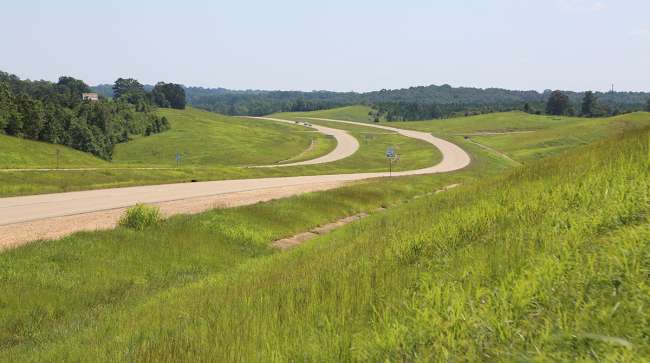Staff Reporter
Mississippi DOT Starts Work on Highway Construction Project

[Stay on top of transportation news: Get TTNews in your inbox.]
The Mississippi Department of Transportation recently began a construction project to extend state Route 76 as part of a regional highway development effort.
Specifically, the project will add 9 miles to state Route 76 in Itawamba County, which lies in the northeast part of the state. The extension will create a link between state routes 23 and 25. SR 23 connects with SR 76, which stretches into Mississippi for less than 3 miles before it changes designation at the Alabama border.
Although short, SR 76 makes up part of the Appalachian Development Highway System in Mississippi. Authorized by Congress in 1965, the Appalachian Development Highway System was designed to spur economic development in isolated areas, connect Appalachia to the interstate system and link areas within the region to markets throughout the country.
MDOT’s project is meant to complete the final portion of Corridor V, a section of the Appalachian Development Highway System that runs from Batesville, Miss., to Marion County, Tenn., which is just west of Chattanooga.
A map of the project is below.
State Route 76 Four-Lane Pr... by Transport Topics on Scribd
Thomas Smith, senior transportation adviser for the Appalachian Regional Commission, grew up in the mountains of North Carolina. He said highway projects make an importance difference in counteracting some of the accessibility issues that can impact mountainous areas.
“This has tremendous benefits when it comes to moving freight, when it comes to having safer roads [and] when it comes to providing better access into Appalachia and relieving the isolation,” Smith said. “As you have freight continuing to grow, you will have more and more of a need for these better highways.”
The Appalachian Regional Commission is an economic development agency that includes representatives from federal, state and local government.
REGIONAL VIEW: The Appalachian region encompasses all of West Virginia and parts of 12 other states: Alabama, Georgia, Kentucky, Maryland, Mississippi, New York, North Carolina, Ohio, Pennsylvania, South Carolina, Tennessee and Virginia.
The Appalachian Development Highway System contains 3,090 miles. Smith, who previously served as secretary of the West Virginia Department of Transportation, said projects for the road network are about 91% complete or under construction.
According to MDOT, Corridor V connects intermodal facilities in Mississippi, Alabama and Tennessee. Additionally, the route provides key access to the Port of Huntsville, an air and rail cargo hub in Alabama, and the Tennessee-Tombigbee Waterway, a man-made waterway that extends from the Tennessee River south into Mississippi and Alabama.
Freight haulers moving along Corridor V currently have to use a 13-mile section of SR 23, which is a two-lane road, when traveling into Alabama. The new portion of highway, which will have four lanes, will shave 4 miles off the journey.
“MDOT’s No. 1 priority is the safe and efficient movement of goods and people,” Executive Director Melinda McGrath said. “This final phase of Corridor V will take freight traffic off two-lane highways and move it to four-lane highways specifically designed for this purpose.”

Host Seth Clevenger speaks with Mike Perkins and Derrick Loo, test drivers at Peloton Technology, one of the companies at the forefront of developing truck platooning systems. Hear a snippet, above, and get the full program by going to RoadSigns.TTNews.com.
The project is expected to be completed by the end of 2023. Although the majority of construction work will take place away from existing roads, MDOT still cautions drivers to be alert for highway workers and equipment.
The $81 million extension project was supported in part by a federal Infrastructure for Rebuilding America (INFRA) grant of $52.4 million. Smith noted that constructing roads in mountainous areas is expensive and requires certain environmental processes, such as dodging wetlands and maintaining the safety of endangered species.
The project will continue as planned, although McGrath acknowledged that there is less demand for fuel as residents shelter in place during the coronavirus pandemic.
“As a result, we anticipate fuel tax receipts to be decreased in the coming months,” McGrath said. “However, ongoing highway projects will continue as planned, and MDOT will continue to make efficient use of the resources available.”
Want more news? Listen to today's daily briefing:



